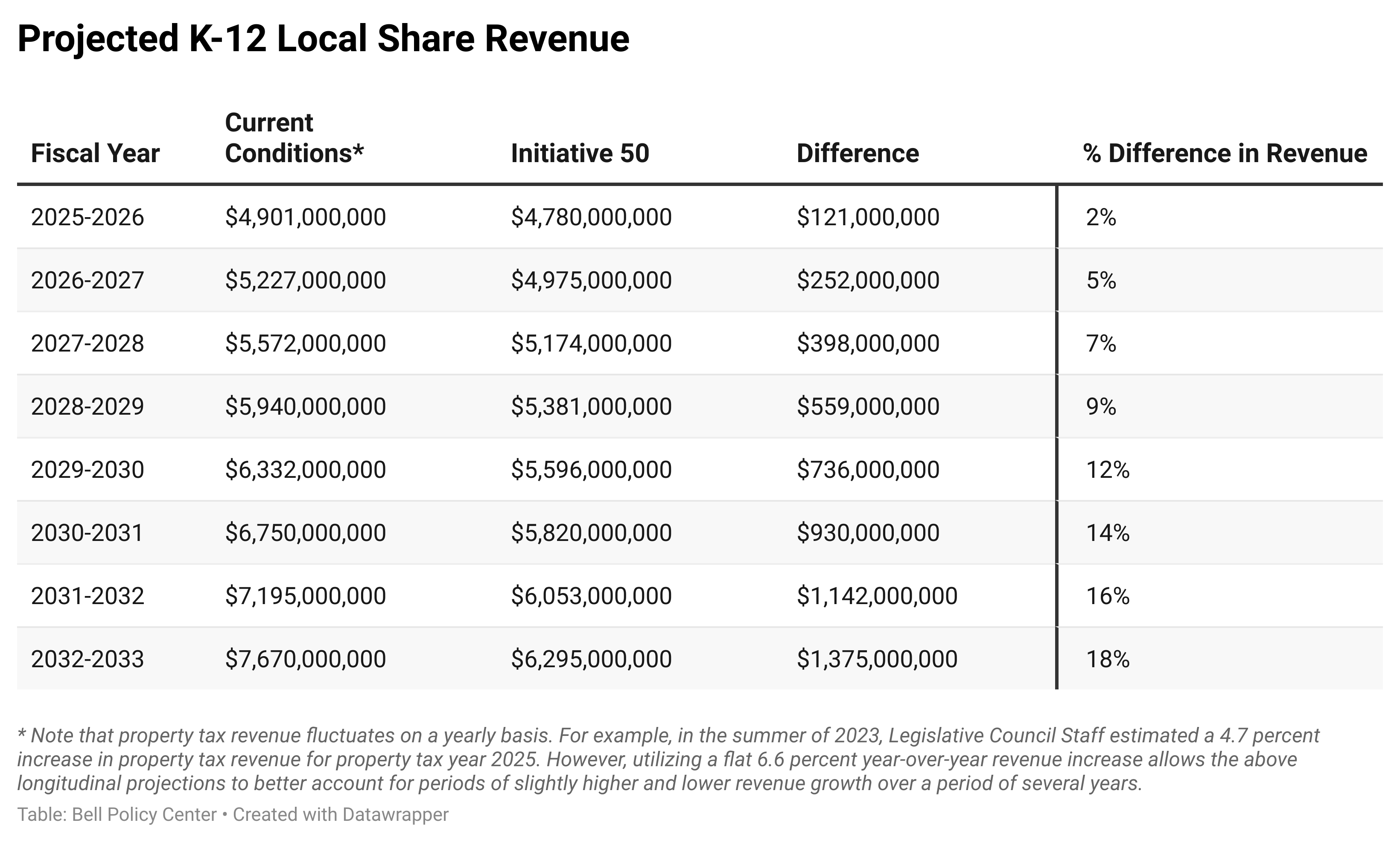This memo analyzes the potential impact of Colorado’s proposed Initiative 50 on school finance. Findings indicate that, should Initiative 50 pass at the ballot in November, Colorado will face significant trouble in the near future funding K-12 education with available resources.
Initiative 50 is a constitutional amendment which has already qualified for the November 2024 ballot. If passed, yearly growth in statewide property tax revenue collection would be capped at 4 percent. If this limit is exceeded, retention of the excess revenue must be approved by voters via a statewide ballot measure. Initiative 50 intersects with K-12 funding because property taxes are a main source of revenue for this system.
The following table estimates Initiative 50’s impact on K-12 funding over the next several years. Property tax collections under current conditions are modeled as increasing by 6.6 percent year-over-year. This assumption is based upon work by Legislative Council Staff, who found this to be the historic average of growth in local share contributions to school finance between FY 10-11 and FY 23-24. FY 2024-2025 local share estimates of $4.6 billion are used as the base year for this modeling.

As seen in the chart above, the fiscal impacts of Colorado’s Initiative 50 compound with time as a result of year-over-year lowering of base revenue collections.
Projected reductions in the K-12 local share, should Initiative 50 pass, raise significant questions regarding the state’s ability to meet constitutional funding requirements under Amendment 23. As has been widely acknowledged, the state’s ability to meet constitutional funding requirements for the first time in over a dozen years was largely due to increased local property tax revenue.
If Colorado’s property tax collections were to drop as a result of Initiative 50, the state could either increase General Fund or State Education Fund (SEF) contributions. However, utilizing either of these funding sources to fill a growing reduction in property tax revenue will be extremely difficult. Even without the burden of several hundred million dollars of additional K-12 expenditures, the state’s General Fund is currently hard-pressed to meet existing healthcare, transportation, corrections, and higher education needs. Moreover, SEF balances, though currently robust, are not high enough to sustain an over $5 billion cumulative decrease in local share funding by FY 2032-2033. While the state does add new money on an annual basis to the SEF, and these contributions have increased as taxable income grows, a sizable portion of these new funds are obligated to existing K-12 needs. Beyond this, however, after several years new unobligated funds would assuredly be outpaced by the projected drop in property tax revenue.
With the above-mentioned challenges in mind, we predict that, should Initiative 50 pass, Colorado will be forced to either reinstate the Budget Stabilization Factor or significantly cut other state services paid for through the General Fund in the coming years.